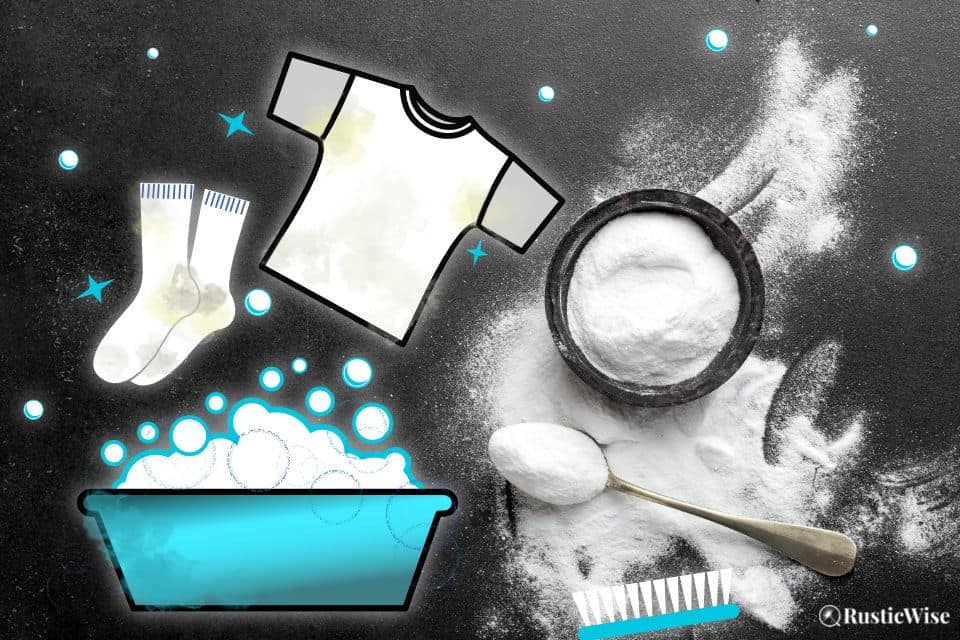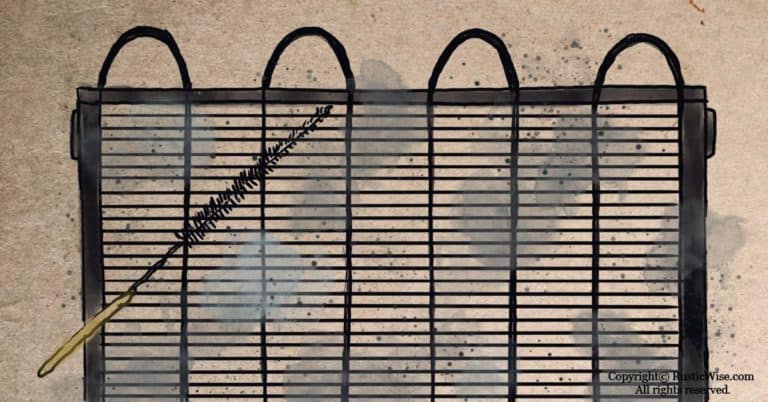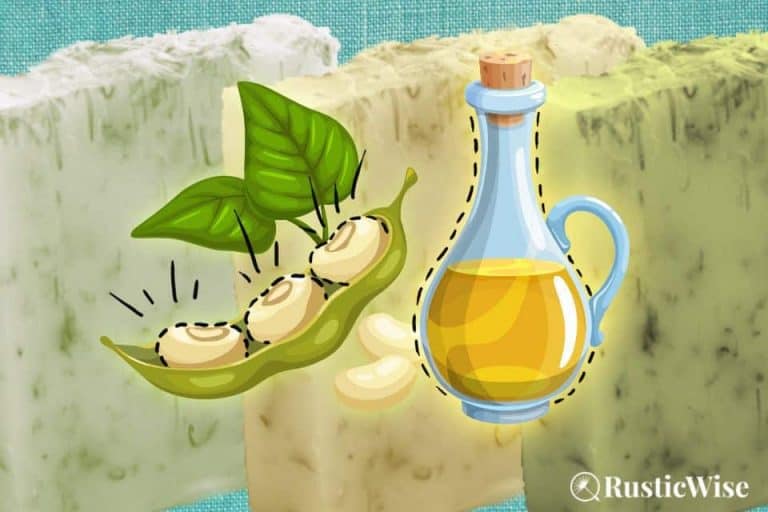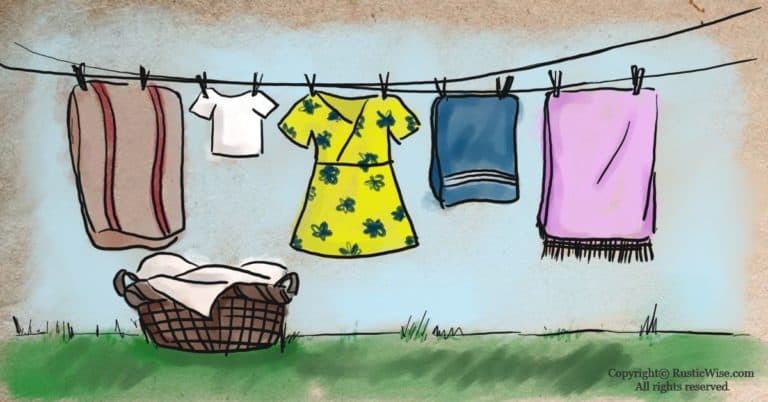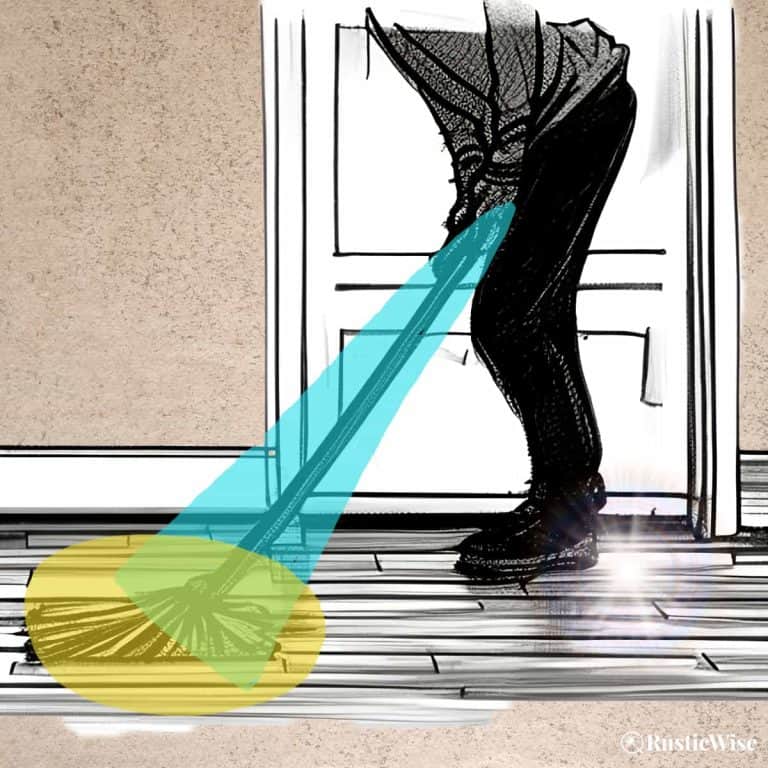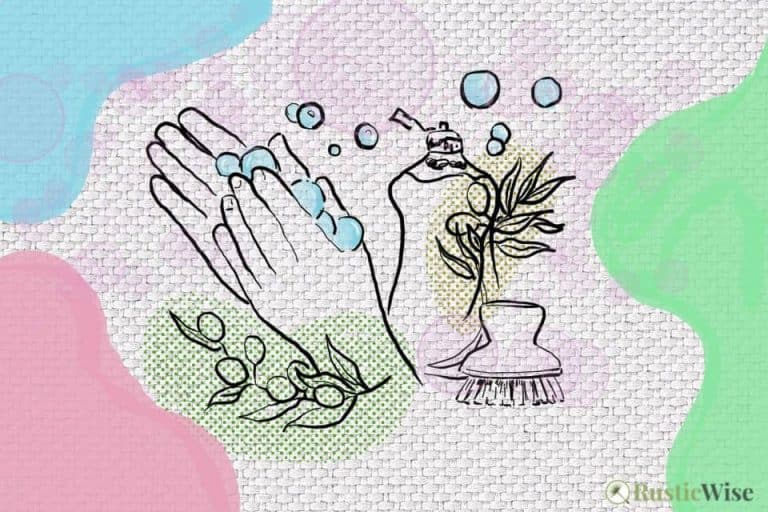Soaking Clothes in Baking Soda + (8 Other Surprising Tricks)
Some of the best cleaning solutions are items you may already have in your pantry. Baking soda is one example. It’s a natural mild abrasive that works to neutralize odors, brighten and soften fabrics, and remove stains. Before you toss those smelly gym clothes in the trash, try soaking clothes in baking soda first!
Not only is baking soda (aka sodium bicarbonate) a cleaning powerhouse, it’s also natural, non-toxic, and affordable too! Unlike some other commercial laundry detergents, this cleaning solution is safe for kids and pets.
We’ll share all the details on how to make your own baking soda soak for smelly or stained clothes. Plus, we’ve rounded up eight other baking soda laundry hacks.
Laundry day just got a lot easier. So roll up your sleeves and let’s begin!
Why baking soda is a cleaning powerhouse
Baking soda, also known as sodium bicarbonate (NaHCO₃), is a natural chemical compound found in virtually all living organisms. It helps to preserve the right pH balance to support healthy life.¹
Baking soda derives from sodium carbonate, aka soda ash, or washing soda (Na₂CO₃). It’s produced by either mining an ore called trona, OR, it’s manufactured by passing carbon dioxide and ammonia through table salt (sodium chloride). The result is a food-safe and non-toxic alkali.¹
There are three main ways sodium bicarbonate works to help you tackle that pile of dirty laundry:
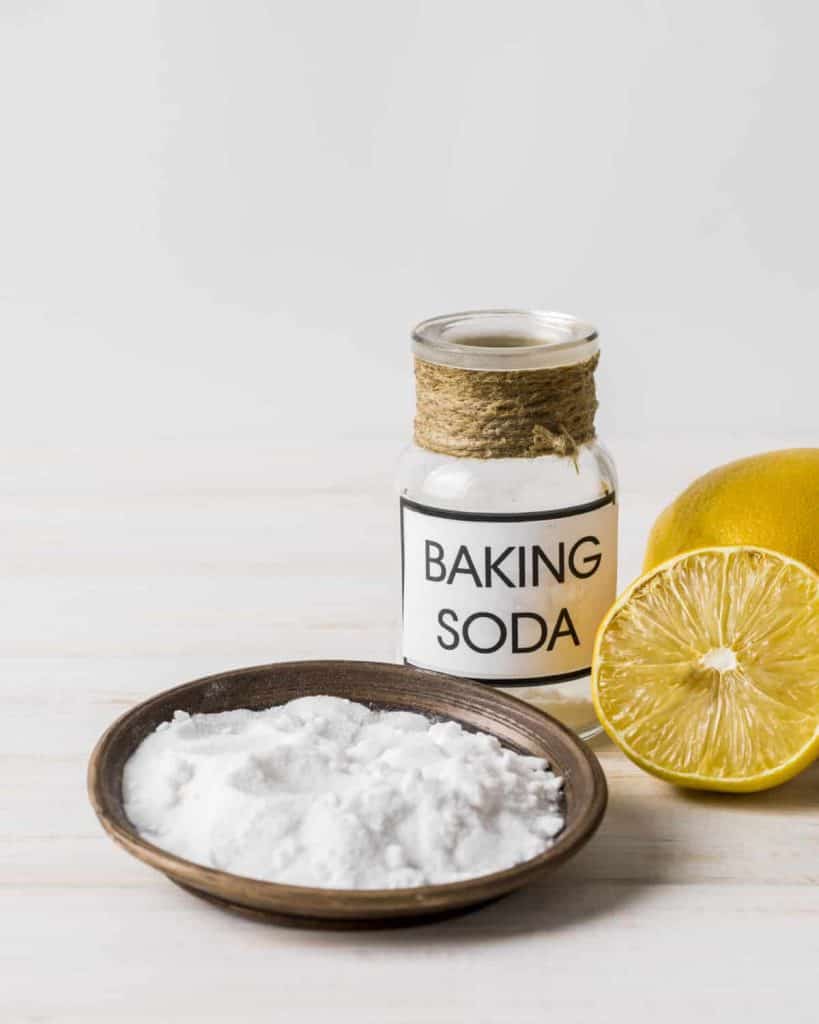
Don’t confuse baking soda with washing soda
While these two sound and look remarkably similar, baking soda and washing soda are NOT the same thing.
Baking soda (sodium bicarbonate) is a milder alkaline powder than washing soda (sodium carbonate). While baking soda is non-toxic (great if you have young children and pets), safe to use around food, as well as mild enough to clean most surfaces, washing soda should be handled with care.
Safety note: Washing soda is more powerful and may cause skin and eye irritation, or gastrointestinal problems if ingested. You should also take care not to inhale the powder.
Cleaning hack: soaking clothes in baking soda
So now that we know a bit about how this cleaning powerhouse works, let’s talk about how you can use it for laundry.
To get the most of the deodorizing and stain removing properties of sodium bicarbonate, make an overnight soak.
If you’ve been working out hard at the gym and can’t seem to remove lingering odors, use the cleaning power of baking soda. This works especially well for smelly gym clothes with armpit stains! Try this hack for:
- Smelly workout gear
- Stubborn armpit stains
- Clothes that reek of smoke, vomit, or other bodily fluids
- Musty old towels
- Anything else that needs some sprucing up!
Tip: If you’re soaking white clothes in baking soda, it’s a good idea to separate any bright colors to avoid staining your whites.
- Fill a large basin with 1 gallon of water and add 1 cup of baking soda. Mix well.
- Add your soiled laundry to the baking soda solution. Make sure all items are completely submerged under the water.
- Let the solution and fabrics soak overnight to give baking soda time to work its magic.
- Remove clothes in the morning and launder as usual.
Can baking soda ruin clothes?
While baking soda is gentle enough on most clothing and fabrics, use caution with delicate fibers such as cashmere, silk, or wool. The colors on these natural fibers may fade with baking soda use.
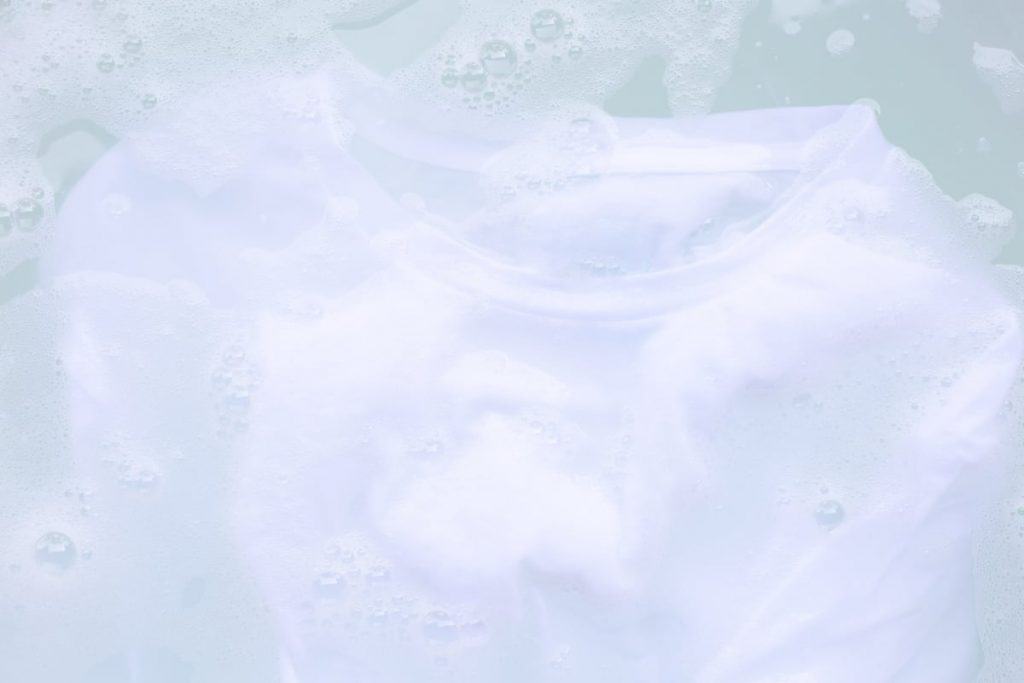
Credit: Vector State
8 other surprising tricks for cleaning with baking soda
Stock up on a few boxes of baking soda to keep in your laundry room and pantry. There are endless ways to use this mild alkali powder around the house.
1. Neutralize odors
Baking soda is a workhorse for removing persistent odors.
Use a dash of baking soda to spruce up:
- Smelly clothes
- Pet bedding
- Deodorize carpets or rugs
1A. How to neutralize odors in the wash
The next time you do laundry, try adding a bit of sodium bicarbonate to the rinse cycle. For especially stinky workout clothes, pair this step with the overnight soak (above).
- Add 1/2 cup of baking soda to the rinse cycle.
1B. How to spruce up pet bedding
In between regular washes, you can treat your dog, or furry friend to a (less smelly) bed. As a safe and non-toxic household cleaning ingredient, you don’t need to worry about harmful chemicals around your pet.
- Sprinkle pet bedding liberally with baking soda.
- Let the powder soak in for at least 15 minutes.
- Vacuum clean.
Safety note: Baking soda can be harmful to pets if ingested in large quantities. Keep your pet away from the bedding until you can vacuum it clean.
1C. Deodorize carpets or rugs
Carpets and rugs get dirty quickly, but lingering odors such as smoke is more difficult to clean. Using sodium bicarbonate is a great way to freshen up your flooring.
- Sprinkle a bit of baking soda onto area rugs. Avoid sprinkling too much, as it may be difficult to remove all of it.
- Let the baking soda sit for at least 15 minutes. Let it sit longer for persistent, or strong odors.
- Vacuum the area thoroughly. Repeat as needed.
2. Natural fabric softener
Commercial fabric softeners and dryer sheets are filled with harmful chemicals. The good news is you don’t actually need fabric softeners to get fluffy soft towels or sweaters.
Baking soda’s abrasive qualities acts to soften fabrics gently and naturally.³ This, combined with white vinegar, gets your clothes extra soft.
- Add 1/2 cup of baking soda into the drum of your washing machine. Load the machine with dirty laundry.
- Add your regular laundry detergent or soap nuts as usual.
- Follow up by adding a splash of vinegar to the fabric softener dispenser during the rinse cycle.
👉Learn more about how vinegar helps with laundry.
3. Enhance the cleaning power of laundry detergent
If you want to get your clothes so fresh and so clean, clean, take advantage of sodium bicarbonate’s powerful buffering qualities. Baking soda helps to maintain the proper pH balance during the washing cycle to get the freshest clean.
Tip: Avoid putting baking soda into the liquid dispenser; instead, add it to the washer’s drum.
- Add 1/2 cup of baking soda into the drum of your washing machine. Load the machine with dirty laundry.
- Add your regular laundry detergent or soap nuts.
- Launder as usual.
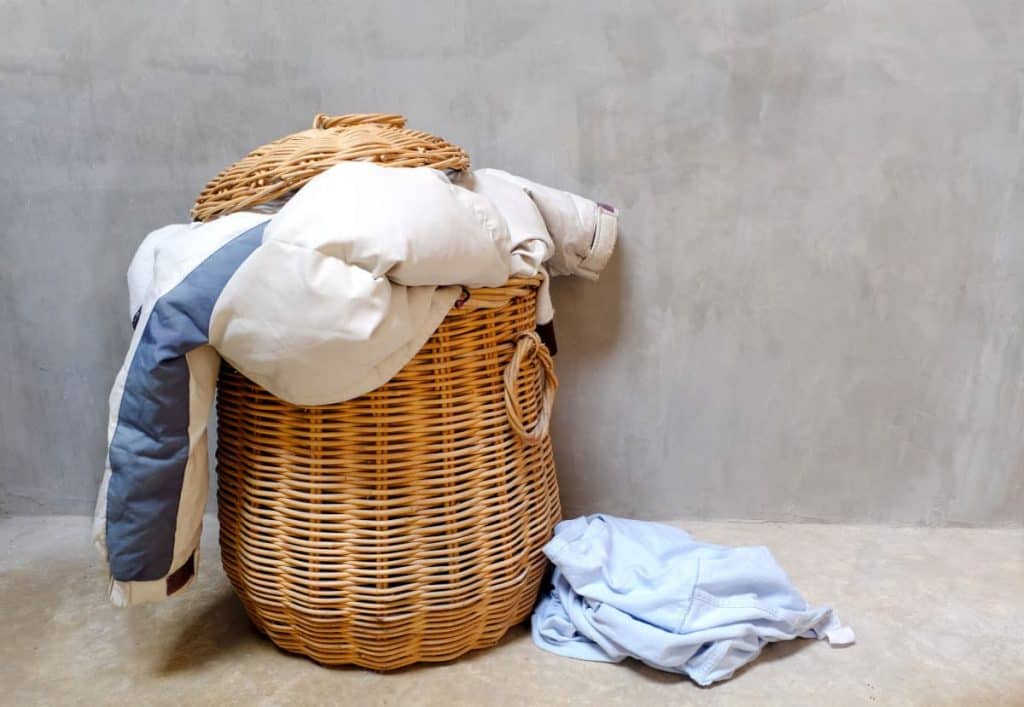
Credit: Vector State
4. Keep clothes in the laundry hamper smelling fresh (or at least not smelly)
Sometimes you don’t always have time to do a load of laundry. Your hamper full of dirty clothes may smell a bit … ripe.
To keep your hamper fresher until laundry day, sprinkle a bit of baking soda onto soiled clothing to neutralize any unpleasant odors.
5. Brighten clothes and reduce the need for bleach
We all want our whites white, and our brights bright. While many of us turn to chemical solutions to do this, such as bleach, it can be avoided or minimized.
Bleach is a powerful and harsh chemical that can weaken fabrics with repeated use. Baking soda can help reduce the amount of bleach you use in half!⁴
You will also get less of the bleachy smell—bonus!
To brighten clothing:
- Add 1/2 cup baking soda (for top-loading machines), or 1/4 cup (for front-loading washers).
6. Spot-treat oil, grease or sweat stains
As a mild alkali and abrasive, sodium bicarbonate is perfect for removing oily dirt from grease stains, or sweat stains.
To spot-treat stubborn stains from oil, grease, or sweat, make a baking soda paste:
- Add 1–2 tablespoons baking soda to a small bowl.
- Add just enough water to make a stiff paste.
- Apply the baking soda paste to the stain. Let it sit for at least 30 minutes, or longer as needed.
- Rinse paste off with water.
- Launder as usual.
7. Remove and deodorize pee stains
Hey, accidents happen. Whether your furry friend, or one of your kids couldn’t make it to the bathroom in time, the strong stench of urine (along with any stains) is no match for good ol’ baking soda.
The cleaning and deodorizing properties in this laundry powerhouse work like a charm.
To remove fresh pee stains on carpet
- Blot out as much excess moisture by using old rags, or newspapers.
- Use a spray bottle filled with water to thoroughly dampen the area. Once again, blot out excess moisture.
- Sprinkle a thin layer of baking soda directly onto the damp spot. Avoid using too much as it may prove difficult to vacuum up. Let it sit for at least 30 minutes.
- Vacuum the area. Repeat this treatment as needed.
How to remove old pee stains on carpet
If an old stain slips by your notice, you can still remedy the problem with baking soda and a few other supplies.
You’ll need:
- Baking soda
- White distilled vinegar
- Hydrogen peroxide
- A stiff cleaning brush, or sponge
- Sprinkle baking soda directly onto the old stain.
- Pour some white vinegar into a spray bottle, undiluted. Spray the white vinegar over the baking soda and the stain. Let it sit for 30–60 minutes to work its magic. Allow it to dry slightly, so it’s still slightly damp.
- Apply the hydrogen peroxide directly onto the stain.
- DAB, don’t scrub the stain with a scrubbing pad or sponge. Add a bit more hydrogen peroxide as needed.
- Vacuum the area.
8. Keep your washing machine sparkly clean
Even the inside of a washing machine could use a pick-me-up once in a while. Grab a sponge or old rag. Start by making a baking soda paste in a small bowl.
- Add 1/2 cup baking soda to a bowl. Add just enough water so that you create a stiff paste.
- Use a sponge or old rag to scrub the nooks and crannies inside the machine. Use some on the exterior too, as needed.
- Wipe clean with a damp cloth.
For more laundry tips, check out an article RusticWise is featured in via PorchWarranty.

References
- Extension Oconto County (University of Wisconsin-Madison), Baking Soda, https://oconto.extension.wisc.edu/files/2011/02/Baking-Soda.pdf. Accessed March 2022.
- American Cleaning Institute, Ingredient Glossary, https://www.cleaninginstitute.org/understanding-products/ingredients/ingredient-glossary. Accessed March 2022.
- Northeastern University, PROTECT Yourself: Avoiding Harmful Chemicals in Detergents, https://web.northeastern.edu/protect/for-the-public-the-media/resource-center/protect-yourself-keeping-harmful-chemicals-out-of-your-life/protect-yourself-avoiding-harmful-chemicals-in-detergents/. Accessed March 2022.
- Kennedy, Samantha (01 April 2019). “Baking Soda: A Pantry Powerhouse,” University of Florida. Accessed March 2022.

Author: Josh Tesolin
Josh is co-founder of RusticWise. When he’s not tinkering in the garden, or fixing something around the house, you can find him working on a vast array of random side projects.

